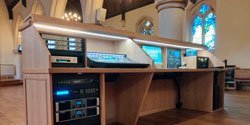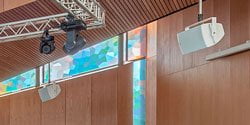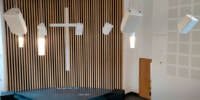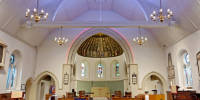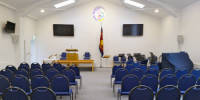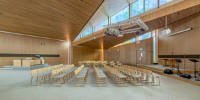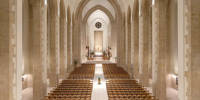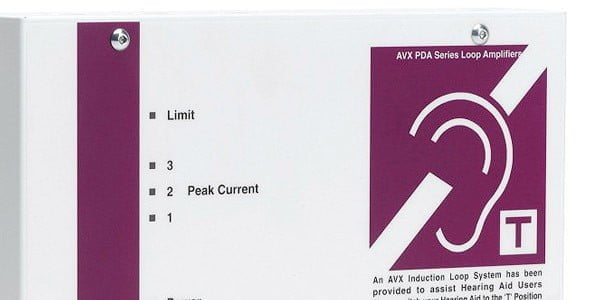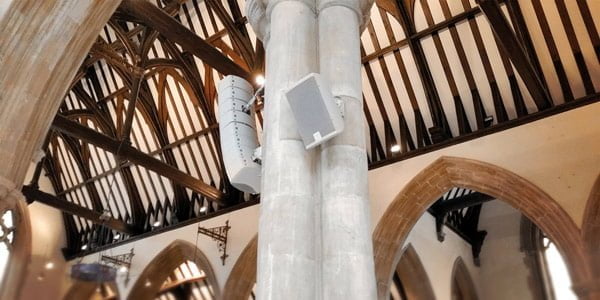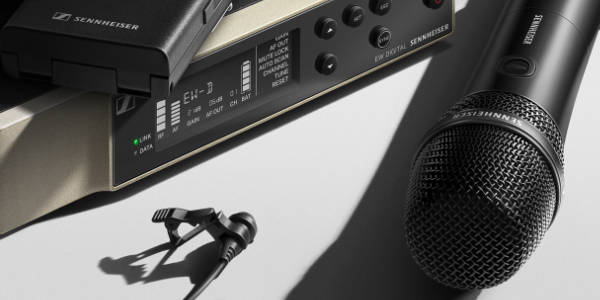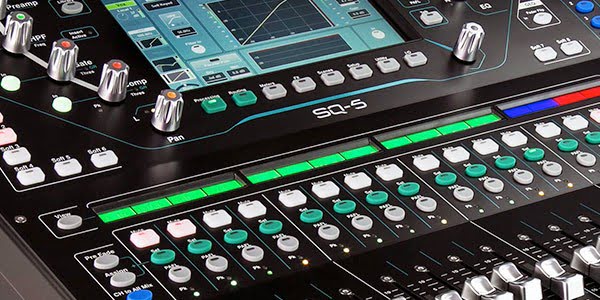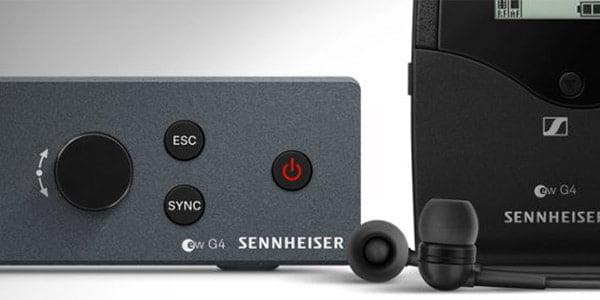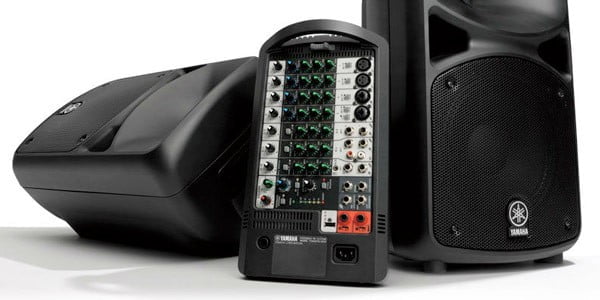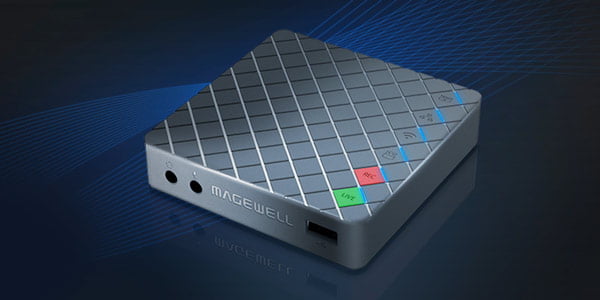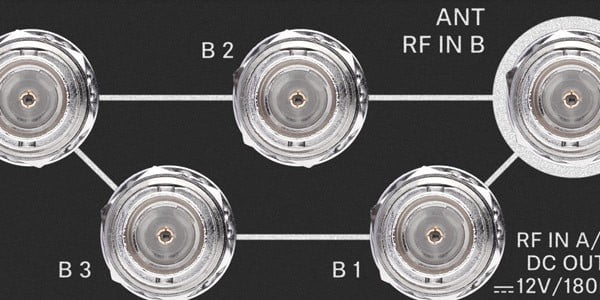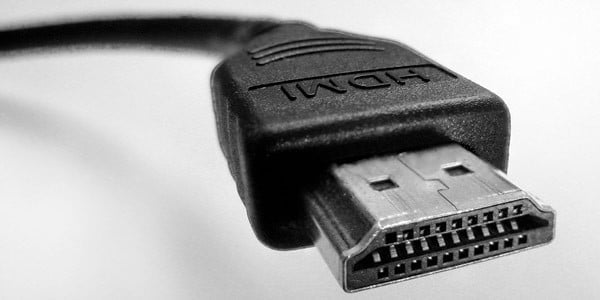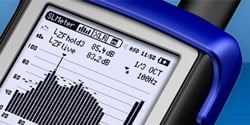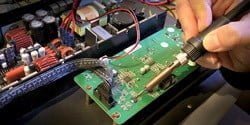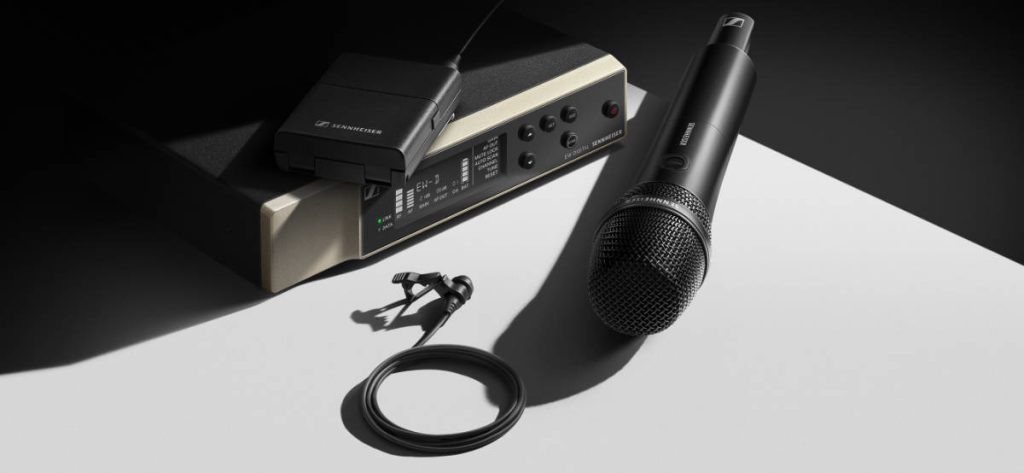
Choosing the right wireless radio microphone can be a daunting prospect. This guide aims to help you make a more informed decision when it comes to choosing the right radio mic for the job. Please feel free to contact us for more specific advice.
Before you decide on which radio mic system/s to purchase, there are a few important things to consider. To begin with, you will need to decide how many radio mic systems you require and what type they need to be, i.e. Handheld, Lapel (often referred to as lavalier or clip-on) or Headset.
Quite often, church leaders and preachers may want to be hands-free, so a 'clipped-on' lapel mic with belt-pack has long been the preferred option. In recent years, discreet headset mics have become popular as well. Despite being a little more noticeable than a lapel microphone, they do offer some audio benefits. As a headset microphone capsule is that much closer to the wearer's mouth, it can be less susceptible to feedback issues. They can also offer a slightly more consistent sound level in use because if the wearer turns their head to one side or the other the headset mic remains at the same distance from the mouth; with a lapel mic, you can sometimes notice a slight decrease in volume as the wearer's head turns away from the lapel mic.
Which Radio Mics to Choose?
Systems with One or Two Radio Mics:
If you are looking to have just one or two radio mics in your church sound system, this can usually be done fairly easily. One thing that can make a difference here is transmission distance and line-of-sight. If you're operating the radio mics within 10-15 meters of the receiver and the transmission signal doesn't have any obstacles (stone pillars, walls, the congregation, etc), then consider the Sennheiser XSW 2 Series as a good budget option. If you're on a tighter budget, then the Audio Technica System 10 desktop range provides an alternative. Both of these can be used without a licence; the former in the deregulated 'Channel 70' and the latter within the 2.4 GHz band.
Despite the two good choices above, we typically recommend the Sennheiser EW-D Series as a better choice for higher quality audio, build and often most importantly, its frequency tuning. The EW-D Series has broader, finer, and digital tuning, meaning quite often it is the better choice, particularly for licensed systems.
Lapel Radio Mic System: If you're looking for a lapel system (with beltpack transmitter and rack-mountable receiver) we recommend the Sennheiser EW-D ME2 System, or on a tighter budget, the Sennheiser XSW 2 ME2.
Handheld Radio Mic System: For a handheld system (with handheld mic transmitter and rack-mountable receiver) we recommend the Sennheiser EW-D 865 System - this has a 'condenser' mic capsule, which we find better for using at a distance or as a 'roving' mic among the congregation. If you will only be using a handheld radio mic close to the mouth, then the Sennheiser EW-D 835 System will be a less costly option. On a tighter budget, the Sennheiser XSW 2 series has alternatives to these: either the XSW 2-865 (condenser type mic) or the XSW 2-835 (dynamic type mic).
Headset Radio Mic Systems: Headset radio mic systems are normally only available (as a package) with aerobic-style larger headsets. The Sennheiser XSW 2-ME3 or EW-D ME3 are good examples of this. If you require a discreet headset, then these will normally have to be paired with a belt-pack-only system, as most manufacturers only supply discreet headsets as a stand-alone item. We recommend the Audio Technica BP892cLM3 discreet headset coupled with a belt-pack-only system like the Sennheiser EW-D SK Base Set. On a tighter budget, the Sennheiser HSP Essential Omni or the Røde HS2 are good options (the latter is usefully available in two sizes, adult or child).
Systems with Multiple Radio Mic Systems
Where you have, or require, four or more radio mic systems, we recommend looking beyond the budget options and opting for the Sennheiser EW-D Series or stepping up to the Sennheiser EW-DX Series.
Operating multiple radio systems is best done on licensed frequencies, which avoids interference, or clashing with other users - it also keeps you legal! This is usually only achievable with higher-quality radio mics with better tuning capabilities or alternative frequency ranges.
Quite often, the need for greater quantities of radio mic systems is in proportion to the size of the church and congregation. It is common in medium to large-sized churches to require additional higher-gain antennae, often distributed to all receivers. This is particularly the case where transmission is compromised by obstacles and/or a greater number of people (who act as good attenuators to radio mic transmission) or if the equipment is kept in a rack in another room or cupboard, for example.
Frequency range and agility, additional antennae, distribution and rack-mounting are common requirements for greater numbers of radio mic systems but not normally found on budget systems. If in doubt, please feel free to get in touch with DM Music for a recommendation tailored to your requirements. For complete peace of mind, we can also offer the arrangement of licences and full installation of the equipment.
For more information about Licensing, please read our Tech Guide on Radio Mic Frequencies & Licensing


